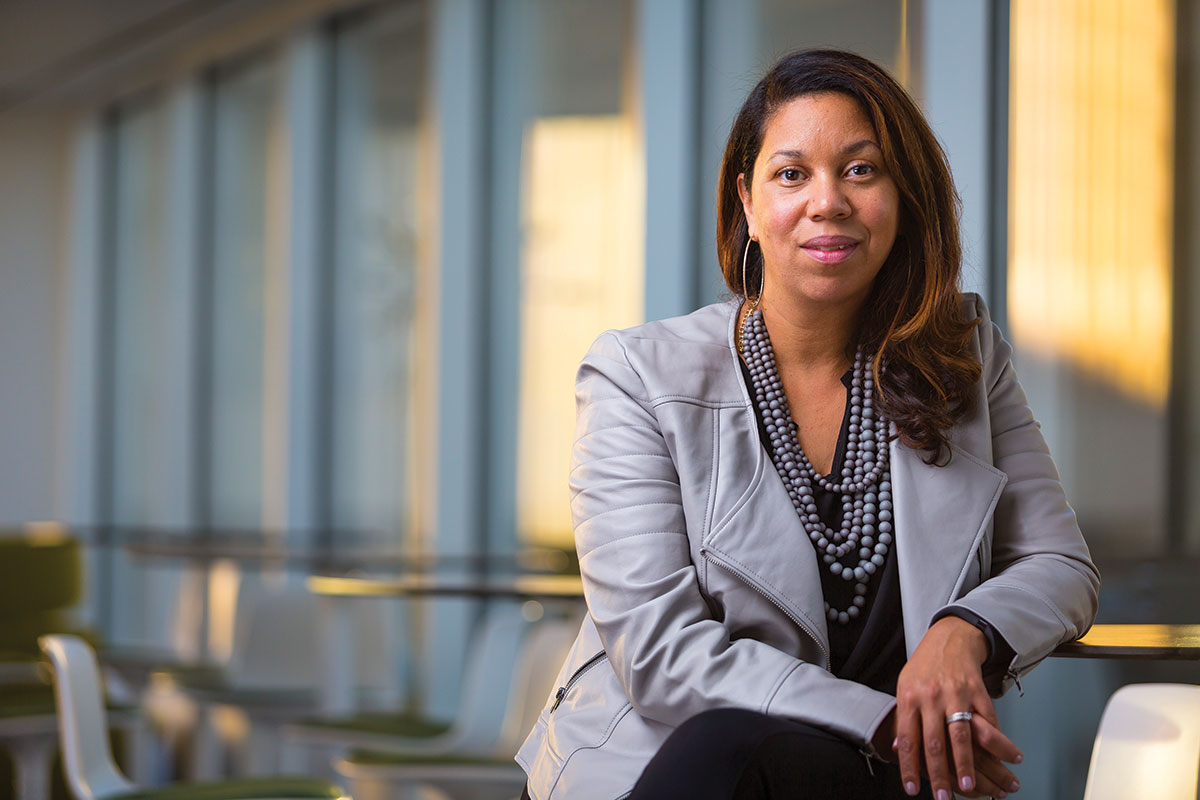
Two years ago, Angelique Power assembled a roomful of colleagues to figure out how to get more people of color into arts posts around the city. The catalyst was a 2013 Americans for the Arts survey that showed that 86 percent of all executives at local arts agencies were white.
“We immediately went to tactical solutions—how do we change this?” recalls Power, president of the Field Foundation of Illinois. Then Carlos Tortolero, founder and president of the National Museum of Mexican Art, spoke up. “Carlos said, ‘Why aren’t we discussing racism?’ “ recalls Power. “It was like he set off a grenade in the middle of the room.”
That first discussion, which Power calls “the worst meeting ever,” led the group to form Enrich Chicago, a coalition of 14 nonprofits and seven foundations whose goal is racial equity, in terms of management, funding and artist support, for Chicago-area Alaana nonprofits by 2050. Alaana stands for African, Latino, Asian, Arab and Native American.
Enrich Chicago doesn’t discuss “diversity and inclusion” at its meetings, held every six weeks and sometimes divided into groups by race. It talks about righting racial injustice and racial inequity.
“It’s not Kumbaya garbage,” Tortolero says. The group’s work “is almost like an intervention,” he adds. “The only way (racism) goes away—you have to be serious and direct about it.”
So far, Enrich Chicago has commissioned a study of arts funding in the Chicago area to get a sense of how foundations fund Alaana groups. It has also started an arts-administration club at Chicago High School for the Arts, where 78 percent of the 600 students are black, Latino or Asian. The club, which has about 20 active members, helps students think about careers in the arts other than as performers, and acts as a pipeline for future arts administrators.
ANTI-RACISM WORKSHOP
Enrich Chicago isn’t yet a registered 501(c)(3). Member dues of about $1,000 a year and foundation funding support the organization. To join, the CEO or executive director of a would-be member group must initiate contact with Enrich Chicago or a member and agree to attend all meetings.
Members also are required to attend a three-day workshop run by the People’s Institute for Survival and Beyond, a New Orleans-based anti-racism organizing group. The workshop, Undoing Racism, examines and then unpacks the roots and history of racism, the systems that perpetuate it, and its effect on all people. Enrich Chicago hosted three seminars this year and plans to host four in 2017. To date, 115 people, from foundation heads to arts organization board members and staffers, have attended.
“A lot of us have a new understanding of our role in the system and perpetuating the system,” says Kate Lorenz, executive director at Hyde Park Art Center. “We are having really tough conversations internally about how we undo the system we are part of,” she says. About half the center’s 14 staff members have attended the workshop.
As a result of her participation, Lorenz looks closely at how the center presents its mission. In its 2020 strategy plan, for instance, “we wanted to move away from ‘diversity’ and toward ‘racial equity,’ “ Lorenz says. She avoids words like “underserved” and “at-risk,” when talking about the youths who participate in the center’s programs.
“We are not ‘serving’ our teens,” Lorenz says. “They are participating in our community; they are tapping into their potential. We are not offering charity.”
Steppenwolf Theatre has hired ArtEquity, a national organization that aims to right racial inequities in the arts, to assess its diversity, inclusion and resources. Based on the results of the survey, the theater will hold a two-day skills-building training session late this winter.
Steppenwolf has also added training around bias, privilege and social location for its 18 apprentices, most of whom are white. The idea is to graduate a group of people trained to be “allies for anyone subject to bias and oppression into the theater world,” says David Schmitz, executive director at Steppenwolf. The first class of so-trained apprentices graduated in May.
Meanwhile, the situation has improved, if only slightly. The 2015 Americans for the Arts census shows that 83 percent of all arts administrators are white.